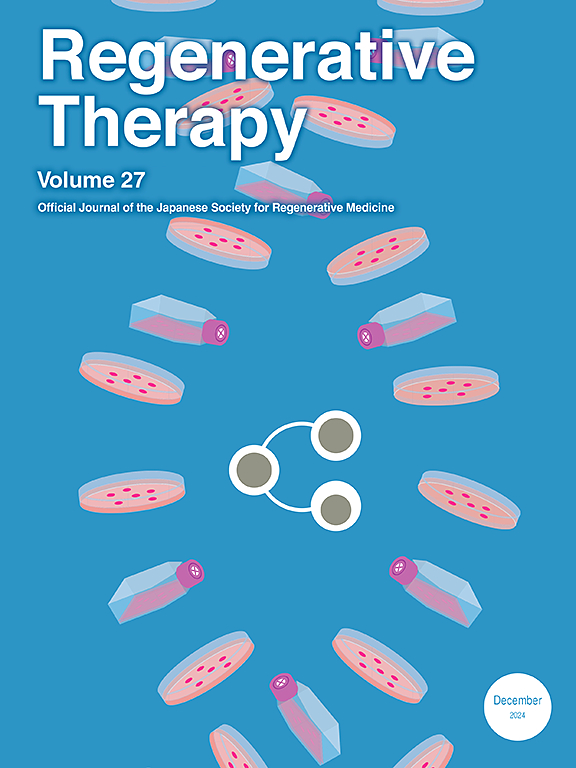Novel preparation of laponite based theranostic silver nanocomposite for drug delivery, radical scavenging and healing efficiency for wound care management after surgery
IF 3.4
3区 环境科学与生态学
Q3 CELL & TISSUE ENGINEERING
引用次数: 0
Abstract
In this work, laponite (LAP) was used to develop the silver (Ag) based nanocomposite for improved anti-bacterial action and wound healing properties. The amphiphilic co-polymers such as PLGA polymer was embedded with the surface of LAP molecules and polyethyleneimine (PEI) through the interaction of hydrophobic binding and it was formed as LAP/PLA-PEG/PEI formulation through the coupling chemistry. The Ag nanoparticles was loaded into formulation to develop LAP/PLA-PEG/PEI/Ag nanocomposite and characterized by different analytical techniques. The UV–Vis and XRD results report that the nanocomposite has shown Surface Plasmon Resonance (SPR) peak at 415 nm for AgNPs particles and provide the strong intensity peak along with 48 nm particle size, respectively. The HR-TEM image showed that the LAP/PLA-PEG/PEI/Ag nanocomposite has shown crystal lattice with spherical morphology. In addition, the synthesized nanocomposite requested in the swelling along with degradation, radial scavenging activity and drug releasing behaviour by in vitro method. The anti-bacterial analysis results showed that the nanocomposite have greater bacterial inhibition. Moreover, In vitro cell model and In vivo wound healing studies confirmed that nanocomposite have significant biocompatibility and healing properties. Importantly, in vivo histological analyses confirmed the effective wound healing effect of nanocomposite by complete re-epithelialization, formation of new granulation tissue and blood vessels. These observations provide strong evidences to use this novel nanoformulation for wound healing application with anti-microbial action.
新型制备的拉脱石基治疗银纳米复合材料用于手术后伤口护理管理的药物输送、自由基清除和愈合效率。
在这项工作中,拉脱土(LAP)被用于开发银(Ag)基纳米复合材料,以提高抗菌作用和伤口愈合性能。将PLGA聚合物等两亲共聚物通过疏水结合相互作用嵌入LAP分子和聚乙烯亚胺(PEI)表面,通过偶联化学反应形成LAP/PLA-PEG/PEI配方。将银纳米粒子加入到配方中制备LAP/PLA-PEG/PEI/Ag纳米复合材料,并采用不同的分析技术对其进行表征。UV-Vis和XRD结果表明,AgNPs颗粒在415 nm处出现了表面等离子体共振峰(SPR),并在48 nm处出现了强强度峰。hrtem图像显示,LAP/PLA-PEG/PEI/Ag纳米复合材料呈球形晶格结构。体外实验结果表明,所合成的纳米复合材料具有良好的溶胀降解能力、径向清除能力和药物释放能力。抗菌分析结果表明,该纳米复合材料具有较好的抑菌效果。此外,体外细胞模型和体内伤口愈合研究证实,纳米复合材料具有显著的生物相容性和愈合性能。重要的是,体内组织学分析证实了纳米复合材料通过完全的再上皮化、新肉芽组织和血管的形成而有效的伤口愈合效果。这些观察结果为使用这种具有抗菌作用的新型纳米制剂用于伤口愈合提供了强有力的证据。
本文章由计算机程序翻译,如有差异,请以英文原文为准。
求助全文
约1分钟内获得全文
求助全文
来源期刊

Regenerative Therapy
Engineering-Biomedical Engineering
CiteScore
6.00
自引率
2.30%
发文量
106
审稿时长
49 days
期刊介绍:
Regenerative Therapy is the official peer-reviewed online journal of the Japanese Society for Regenerative Medicine.
Regenerative Therapy is a multidisciplinary journal that publishes original articles and reviews of basic research, clinical translation, industrial development, and regulatory issues focusing on stem cell biology, tissue engineering, and regenerative medicine.
 求助内容:
求助内容: 应助结果提醒方式:
应助结果提醒方式:


